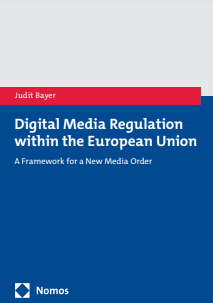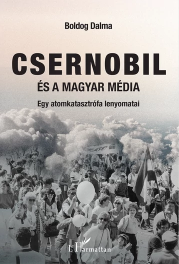Contents – Spring 2020
Müllner, András:
Müllner, András:
The other in ourselves
Starting from Lajos Császi’s essay about an early English participatory movement called Mass Observation, and taking a Hungarian experimental short film titled Private history as a particular example, this study explores how one can understand the appropriation of a private film archive as a sort of participatory research, or as a sort of “science of ourselves”. In the case of the Private history made by Gábor Bódy and Péter Tímár in 1978, there is a construction of a particular relationship: the professional filmmakers “organised” a participatory research, the protagonist of which is a private filmmaker who had shot his footages long before the final cut of his material. He and his family represented themselves by their home movies, and the abovementioned professional filmmakers used these family footages as a visual study of private lives before and under Worl War II in Hungary. Through the exploration of the archive materials they tried to reveal the origins and actual chances of the contemporary civil society in the 1970s. This study suggests that one of the elementary questions raised by Private history is that of which were the ways of visual representation for a Jewish family before and under Worl War II in Hungary, and beyond that and more widely, and of what could the private image mean in an illiberal, antidemocratic and dictatorial society.
Keywords: archive footages, auto-etnography, counter-culture, everyday life, experimental film, halfie anthropology, hegemonic culture, Lambeth Walk, Mass Observation-movement, othering/constructing the Other, participatory research, popular culture, private film, Private history, “science of ourselves”
Médiakutató Spring 2020 pp. 11-23
Gálik, Mihály:
Gálik, Mihály:
Echo chambers and filter bubbles
In the past three decades, both the production of news/information on public matters and the distribution of these to the audience have undergone major changes. The online distribution of news and information has enabled users to personalise their news consumption on the one hand, and allowed for user generated content on the other hand. These two practices have become the recurring topics of mainstream communication research after the millennium. Around the early 2010s and in the Web 2.0 environment, the role of algorithmic filtering introduced by online news platform providers has become another mainstream research topic. Leading academics have also voiced the paradox that the personalisation of online news consumption may reduce the scope and diversity of news consumed by the audiences, the abundance of available news on many online platforms notwithstanding. Yet the findings of most relevant research projects suggest that this concern is highly overstated. Although there are echo chambers and filter bubbles in the contemporary digital networked media scene, these are highly different from the ones outlined by their visionaries.
Keywords: algorithmic filtering, echo chamber, filter bubble, hype, news bubble, news media, online news media, personalization
Echo chambers and filter bubbles
Médiakutató Spring 2020 pp. 27-35
Feischmidt, Margit – Zakariás, Ildikó:
Feischmidt, Margit – Zakariás, Ildikó:
Media effects and opinion formation among Hungarian living in Germany and solidarising with refugees
The paper analyses the relationship between transnational solidarity and the public. It seeks to explore the relationships between media consumption, refugee solidarity and the expression of related opinion among people exposed to two different national media spaces and themselves trans-nationally mobile. The effect of both legacy and social media has been examined. Refugee solidarity has been operationalised both as practices (either philanthropic aid or paid work helping refugees in Germany) and as attitudes, taking into consideration opinions regarding refugee supporting practices. Based on a quantitative survey and qualitative interviews conducted among Hungarians living in Germany, it finds that, through its capacities of shaping the public, refugee solidarity has implications beyond immediate helping relations.
Keywords: Germany, Hungary, media and publicity, migration, refugees, solidarity
Media effects and opinion formation among Hungarian living in Germany and solidarising with refugees
Médiakutató Spring 2020 pp. 37-54
Mátyus, Imre:
Mátyus, Imre:
Diversification in community and interaction within FLOSS communities
The spread of world wide web use in the 1990s and the increasing importance of social media platforms in the 2000s did not only result in a paradigm shift in mass communication, but also generated deeper social changes. In the last few decades, we witnessed the creation of new kinds of communities and practices, generated by the new media devices that play an ever-increasing role in the organisation and operation of communities. This study is to demonstrate such tendencies through the example of open source software communities. More precisely, it shows the changing role and diversification of online platforms in the context of Hungarian Linux users’ interactions. It also attempts to illustrate the connection between the modal and topic-related changes of interactions and the expansion of Linux user communities.
Keywords: interaction, internet studies, Linux, new media, online community, open source, social media
Diversification in community and interaction within FLOSS communities
Médiakutató Spring 2020 pp. 57-66
Glózer, Rita:
Glózer, Rita:
Litrerary Consumption in the Age of Mobile Media
As a part of the transformation of the literary public sphere in the era of social media, the discursive field of literary criticism is also changing in essential respects. This is happening because, despite the predictions that online amateur literary criticism would open up and widen these literary discourses, such activity only seems to have resulted in the popularisation and slight intellectual deterioration of the critical praxis so far. While online amateur critical discourses have multiplied and expanded, traditional print platforms such as journals of high literary criticism are on the decline. However, according to media-optimistic arguments, social media sites serving as discursive platforms can eliminate information and knowledge monopolies and grant access to elite or professional discourses to many. This paper, focusing on a specific social media site, attempts to investigate how these tendencies foster the evolution of simplistic, easy-to-absorb forms of literary consumption and the ‘re-folklorisation’ of literature. Practices and products of this trend seem to manifest themselves on a spectrum ranging from high cultural phenomena to popular memetic culture.
Keywords: Instagram, literary criticism, literature, meme, poem, poetry, public sphere, Rupi Kaur
Litrerary Consumption in the Age of Mobile Media
Médiakutató Spring 2020 pp. 67-77
Guld, Ádám:
Guld, Ádám:
“Stars are everywhere.”
There is a long-standing trend in the world of stars: the most successful players are simoultaneously present on multiple platforms. While the export of fame from one channel to another could only be realised within narrow frameworks until the end of the 20th century, in the digital era there are almost unlimited possibilities for expanding and strengthening popularity gained through the media. At the same time, the mechanisms of the celebrity industry are becoming increasingly complex. The conscious management of various offline, online and non-media appearances is now a must-have for better visibility with the ever-increasing goal of reaching a full, 92 Guld Ádám 360-degree presence. In this context, one can assume that these processes lead to serious changes in fandom culture and user practices. Who are the fans following, and which channels do they use? How do audiences react to the fact that stars now appear on all possible surfaces? How does this affect follower activities? This paper primarily seeks answers to these questions.
Keywords: celebrities, fan studies, generation Z, influencers, media convergence, media culture, ordinary famous people, stars, star studies
Médiakutató Spring 2020 pp. 79-92
Pólya, Tamás:
Pólya, Tamás:
Videogames as narrative climbing frames and as media texts
Videogames are unlike traditional, non-digital media texts. They may offer a story but that is secondary with respect to their being a medium of simulation and interaction, which constitutes their essence. This paper inquires into whether videogames, being of said ergodic nature, may properly be analysed as media texts, if the latter are defined as mass-mediated constructs of reality to be construed along narrative and ideological lines. It submits a broad interpretation of ‘media text,’ and suggests that applying the concept of ‘reading’ to videogames is misleading in so far as many digital games resemble playground climbing frames or obstacle courses (or, in more complex cases, mathematical exercises to solve) more than a novel or a movie, and there seldom arises a need to interpret a climbing frame or a math problem from a narrative or an ideological point of view. Rather, they usually require some perceptual and physical (i.e. non-interpretative) activity on the part of the player. This paper considers some aspects of the climbing frame approach and the attentional shift of players from interpreting the narrative to the successful accomplishment of required action and attempts to refine the ergodic hermeneutics of videogames accordingly
Keywords: attention shift, computer games, concept of media text, ergodic texts, hermeneutics, limited cognitive resources, primary role of perceptual-motor actions, secondary role of narrative, simulation
Videogames as narrative climbing frames and as media texts
Médiakutató Spring 2020 pp. 93-104
Hermann, Veronika – Keszeg, Anna:
Hermann, Veronika – Keszeg, Anna:
Glorious Times
Questions raised by the analysis of individual and collective aspects of nostalgia in the social sciences have focused not only on the desire for our former self or on the contradiction between collective and individual remembrance, but also, more generally, on what patterns are behind the rethinking and narrating of the past. Media texts structured around nostalgia as a narrative organising element, saturated with textual and ritual functions, create a metaphor for temporality in which images and texts produce a nostalgic experience. The recording of the individual and social experiences of nostalgia often acts in a spatial manner, which is inconsistent with the traditional modus operandi of both mediums. The topography of nostalgia narrates the past not only in time but also in space, combining homeliness with walkability. In this paper we want to show how nostalgia redistributes time through a variety of media texts coming from mainstream popular culture where in our consumption practices a fictitious past continually collides with a contradictory historic one. The field of analysis of nostalgia practices are the 1960s and its nostalgic media representations. One case study is related to the representations of 1968 in contemporary fashion media products (mainly those of the Gucci fashion house) and the other is George Lucas’s American Graffiti (1973), a movie made in the 1970s, situated in the 1960s, and stylistically placed in the 1950s in a narrative that is nostalgic at its core.
Keywords: Cold War, cultural memory, cultural studies, fashion, France, mass culture, mediated memory, memory politics, moving pictures, societal nostalgia, United States of America
Médiakutató Spring 2020 pp. 107-114
Havasréti, József:
Havasréti, József:
Pécs in the Decade of the “New Wave”: The Eighties
This study looks into one of the most important periods of the underground/alternative culture of Pécs. The emblematic endeavors of the 1980s (new wave music, transavantgarde fine art, postmodern literature and thinking) are illustrated by examples such as pop music, performance art, alternative press, and visual design.
Keywords: alternative public sphere, cultural resistance, DIY, literaryí samizdat new wave, performance, pop music, post-modern, punk
Pécs in the Decade of the “New Wave”: The Eighties
Médiakutató Spring 2020 pp. 115-122
Tófalvy, Tamás:
Tófalvy, Tamás:
Where the Social History of Hungarian Digital Media and Theories of Interpretative Media History Meet
„Work in this area is just beginning; we need much more” – wrote Fred Turner (2017) about unearthing local, non-American cultural histories of the internet. Indeed, while the Anglo-Saxon and predominantly American past of digital media is relatively well-documented and researched (see Boczkowski 2004), about digital histories of the peripheral regions – whether in the Global South or in Central and Eastern Europe – little is known and written in the realms of social sciences. This paper attempts to reflect upon one methodological question regarding the possible narratives of the social history of Hungarian content provision: what kind of relationship could be established between research in this particular field and the Anglo-Saxon research tradition of interpretative technology and media history?
Keywords: content provision, cultural technology studies, historical narratives, Hungary, Internet history, media history, social history
Médiakutató Spring 2020 pp. 123-130




